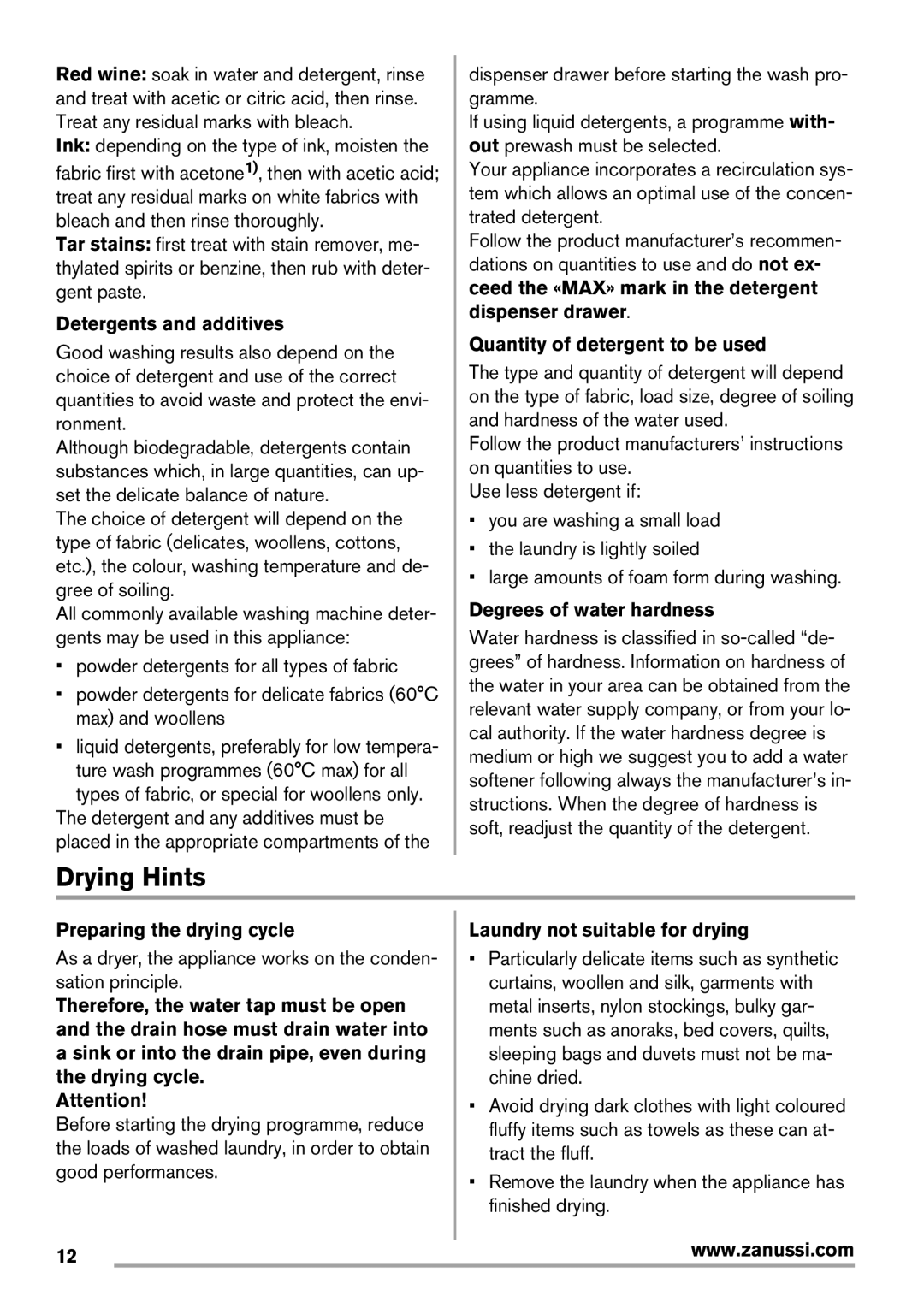
Red wine: soak in water and detergent, rinse and treat with acetic or citric acid, then rinse. Treat any residual marks with bleach.
Ink: depending on the type of ink, moisten the fabric first with acetone1), then with acetic acid; treat any residual marks on white fabrics with bleach and then rinse thoroughly.
Tar stains: first treat with stain remover, me- thylated spirits or benzine, then rub with deter- gent paste.
Detergents and additives
Good washing results also depend on the choice of detergent and use of the correct quantities to avoid waste and protect the envi- ronment.
Although biodegradable, detergents contain substances which, in large quantities, can up- set the delicate balance of nature.
The choice of detergent will depend on the type of fabric (delicates, woollens, cottons, etc.), the colour, washing temperature and de- gree of soiling.
All commonly available washing machine deter- gents may be used in this appliance:
•powder detergents for all types of fabric
•powder detergents for delicate fabrics (60°C max) and woollens
•liquid detergents, preferably for low tempera- ture wash programmes (60°C max) for all types of fabric, or special for woollens only.
The detergent and any additives must be placed in the appropriate compartments of the
dispenser drawer before starting the wash pro- gramme.
If using liquid detergents, a programme with- out prewash must be selected.
Your appliance incorporates a recirculation sys- tem which allows an optimal use of the concen- trated detergent.
Follow the product manufacturer’s recommen- dations on quantities to use and do not ex- ceed the «MAX» mark in the detergent dispenser drawer.
Quantity of detergent to be used
The type and quantity of detergent will depend on the type of fabric, load size, degree of soiling and hardness of the water used.
Follow the product manufacturers’ instructions on quantities to use.
Use less detergent if:
•you are washing a small load
•the laundry is lightly soiled
•large amounts of foam form during washing.
Degrees of water hardness
Water hardness is classified in
Drying Hints
Preparing the drying cycle
As a dryer, the appliance works on the conden- sation principle.
Therefore, the water tap must be open and the drain hose must drain water into a sink or into the drain pipe, even during the drying cycle.
Attention!
Before starting the drying programme, reduce the loads of washed laundry, in order to obtain good performances.
12
Laundry not suitable for drying
•Particularly delicate items such as synthetic curtains, woollen and silk, garments with metal inserts, nylon stockings, bulky gar- ments such as anoraks, bed covers, quilts, sleeping bags and duvets must not be ma- chine dried.
•Avoid drying dark clothes with light coloured fluffy items such as towels as these can at- tract the fluff.
•Remove the laundry when the appliance has finished drying.
www.zanussi.com
